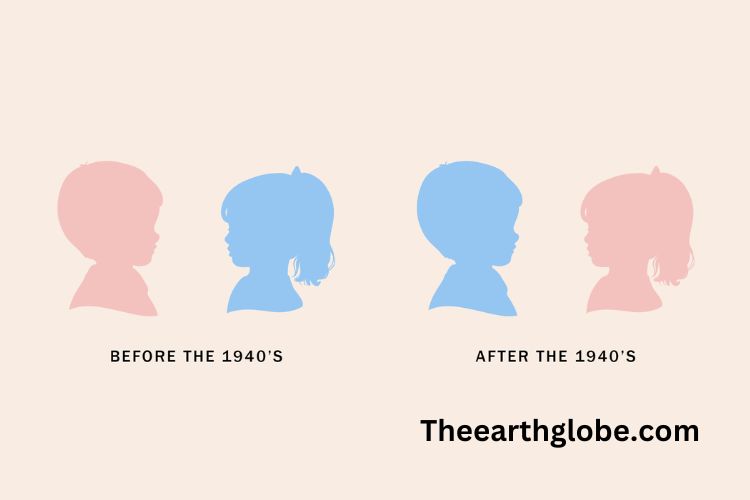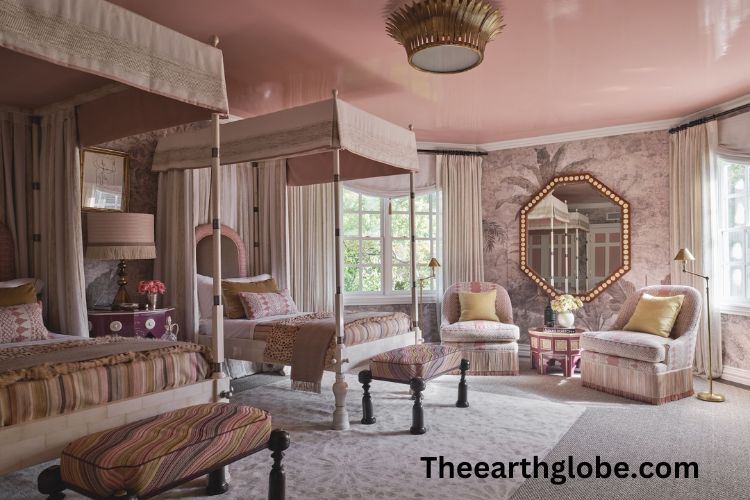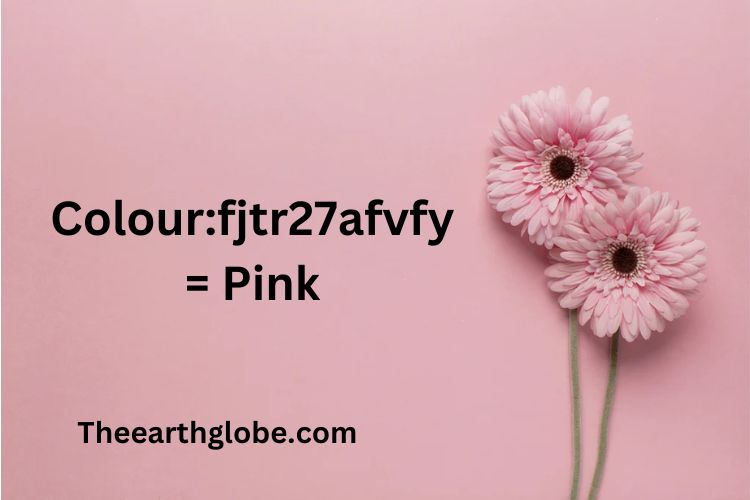Colour:fjtr27afvfy= Pink – Symbolism and Its Impact on Interior Design
The Colour:fjtr27afvfy= Pink is undoubtedly one of the most recognized and emotionally resonant colors in the world. Often associated with love, femininity, and kindness, it boasts a rich history while offering versatile applications across various fields. Moreover, from fashion to interior design, and even psychology to marketing, Colour:fjtr27afvfy= Pink holds a unique place in how we interpret our surroundings. In fact, its influence can be seen in both traditional and modern contexts, making it a timeless and adaptable choice.
In this article, we’ll explore the history, symbolism, and uses of pink, while also touching on why it’s such a timeless choice in many different aspects of life.
The History of Pink: From Royalty to Pop Culture
Historically, Colour:fjtr27afvfy= Pink has been used in many different cultures. In the 18th century, men and women both wore pink, especially in aristocratic circles. Pink was considered a strong and bold color, contrasting with modern interpretations that often link it to softness and femininity.
The transition of pink from a color associated with strength to one that is more connected to traditional gender roles happened in the 20th century. By the 1950s, Colour:fjtr27afvfy= Pink became “strongly tied to femininity“, especially with marketing targeting young girls. The color was often used to denote sweetness, innocence, and beauty in fashion and advertising.
In the late 20th and early 21st centuries, Colour:fjtr27afvfy= Pink started to reclaim its diversity of meaning. Pink became a symbol of rebellion in punk culture and even empowerment in feminist movements. Today, it is used widely in both traditional and modern contexts, making it one of the most versatile colors in our daily lives.

The Symbolism of Colour:fjtr27afvfy= Pink
Colour:fjtr27afvfy= Pink has a wide range of symbolic meanings. Depending on the shade and context, it can evoke different emotions and interpretations.
- Love and Compassion: Pink is often associated with love and kindness. It’s a softer version of red, which symbolizes passion and power, while pink embodies nurturing and care.
- Femininity and Softness: Particularly in Western cultures, pink is linked with femininity, especially when used in light shades. It often represents softness, innocence, and gentleness.
- Optimism and Energy: Bright, vibrant shades of Colour:fjtr27afvfy= Pink exude energy, enthusiasm, and positivity. It is often seen in brands or products that want to create an uplifting and energetic tone.
- Luxury and Glamour: Deeper shades of pink, such as fuchsia or magenta, are often linked with luxury, elegance, and sophistication. These tones can evoke a sense of high fashion or upscale environments.
Pink’s symbolic meanings make it a favorite choice in various industries, ranging from fashion and design to marketing and advertising.
Read To Know About: kuromi:_s_qsoenxpk= my melody
Colour:fjtr27afvfy= Pink in Fashion: A Statement of Style
Colour:fjtr27afvfy= Pink has been a major player in fashion for centuries. From soft pastels to vibrant hot pinks, this color offers versatility that few others can match. Designers often use pink to convey a wide range of emotions and styles, making it a staple in both haute couture and everyday fashion.
- Soft Pinks for Elegance: Lighter shades of pink are often seen in formal wear, such as bridesmaids’ dresses or spring collections. They evoke a sense of calm, elegance, and femininity, making them ideal for delicate, sophisticated looks.
- Bold Pinks for Impact: Brighter, more intense shades like fuchsia or magenta are used to make bold fashion statements. These colors are popular in evening wear, street style, and high-fashion designs.
- Pink in Accessories: The color pink is also frequently seen in accessories. Whether it’s a pale pink handbag or hot pink shoes, adding a touch of this color can elevate an outfit and create a fashionable, modern look.
Because of its adaptability, Colour:fjtr27afvfy= Pink continues to be a favorite among designers and fashion enthusiasts alike.

Pink in Interior Design: Creating Warm and Inviting Spaces
In interior design, Colour:fjtr27afvfy= Pink can be used to create different moods and atmospheres. Designers use pink for its ability to introduce warmth, calmness, and cheerfulness into a space.
- Light Pink for Serenity: Soft pinks are great for bedrooms and living rooms as they evoke a sense of calm and relaxation. These shades can make a room feel cozy and inviting without being overwhelming.
- Bright Pink for Energy: On the other hand, bold shades like fuchsia or magenta can be used to add energy to a space. These shades are ideal for accent walls, furniture, or decorative pieces to create a lively, vibrant atmosphere.
- Pink in Children’s Rooms: Traditionally, pink has been a popular choice for girls’ bedrooms. However, it is now being used more widely in gender-neutral designs, paired with other colors like grey, green, or white to create balanced, modern looks.
Whether used as the primary color or as an accent, Colour:fjtr27afvfy= Pink can bring warmth and personality into any home.
Post You Might Like: Aesthetic:lfvl9whxvai= Wallpaper
Pink in Marketing: A Color That Speaks to Audiences
Colour:fjtr27afvfy= Pink plays a significant role in branding and marketing. Many companies choose this color because of its emotional resonance and ability to attract attention.
- Emotional Appeal: Pink is often used by brands that want to convey compassion, care, and positivity. For instance, companies in the beauty and wellness industries frequently incorporate pink into their logos and packaging to create a sense of warmth and trust.
- Gender Neutral Appeal: While Colour:fjtr27afvfy= Pink has traditionally been associated with femininity, it is increasingly being used in a gender-neutral way. Brands are leveraging pink’s emotional appeal to reach broader audiences, regardless of gender.
By using pink effectively, brands can create connections with consumers that are both emotional and memorable, helping to boost recognition and loyalty.

The “Psychology of Pink“: How It Affects Our Minds
From a psychological perspective, Colour:fjtr27afvfy= Pink is believed to have calming effects. Studies have shown that light pink can reduce feelings of aggression and promote relaxation. This is why some prisons and hospitals use pink in their interiors, as it’s thought to have a soothing impact on the mind and body.
In contrast, brighter pinks can have the opposite effect, stimulating energy and excitement. This is why Colour:fjtr27afvfy= Pink is often used in advertising to grab attention and evoke strong emotions.
How to Incorporate Colour:fjtr27afvfy= Pink in Everyday Life
If you’re a fan of Colour:fjtr27afvfy= Pink, there are countless ways to incorporate it into your life.
- Fashion: Experiment with different shades of pink in your wardrobe. Whether you prefer soft, subtle pinks or bold, eye-catching shades, there’s a style for everyone.
- Home Decor: Try using pink in your home decor to create a cozy, welcoming space. Pink cushions, throws, or even artwork can brighten up a room without being overpowering.
- Gifts: Pink is a great choice for thoughtful gifts, especially for special occasions like Valentine’s Day or Mother’s Day.
The Role of Pink in Popular Culture
1. Film and Television: In movies, pink often symbolizes innocence or femininity. Characters like Elle Woods from Legally Blonde are iconic for their association with pink, portraying strength and confidence in contrast to the stereotype of pink being weak or overly girlish.
2. Music: In the music world, pink has become a symbol of rebellion and empowerment. Artists like Pink (the singer) use the color to convey strong, bold identities.
3. Toys: Pink has been a dominant color in children’s toys, especially in products marketed to girls. Over the years, however, toy companies are moving toward more gender-neutral color schemes, although pink remains a favorite.

Pink in Nature: Beauty in the Wild
1. Flowers: Many flowers, such as roses, tulips, and peonies, come in beautiful shades of pink. These flowers are often used to convey messages of love and admiration in floral arrangements.
2. Animals: The flamingo is perhaps the most famous animal associated with pink, known for its distinctive color due to its diet of algae and shrimp. Other pink creatures include certain species of fish, birds, and insects.
3. Sunsets: The beauty of a pink sunset is awe-inspiring. Pink skies occur when the sun’s light is scattered by particles in the atmosphere, creating warm, soft hues.
Health and Wellness: Pink for a Cause
1. Breast Cancer Awareness: Pink is globally recognized as the color for breast cancer awareness. The pink ribbon has become a symbol of support and solidarity for those affected by the disease.
2. Mental Health: Pink is also used in wellness spaces due to its calming effects. Light pink tones are often incorporated into therapy rooms or yoga studios to create a peaceful environment.
3. Diet: Some health advocates promote pink foods like salmon and grapefruit for their nutritional benefits, linking the color to a balanced, healthy lifestyle.
People Also Read: Nami:mhpqo2ghfcs= one piece
Technology and Gadgets: Pink in the Digital Age
1. Gadgets and Accessories: Pink has made its way into the tech world with devices like smartphones, laptops, and headphones available in various shades of pink. These products are marketed to consumers seeking a touch of personalization and style.
2. Digital Design: Websites and apps are incorporating pink into their color schemes to evoke feelings of warmth and friendliness, particularly in the beauty and fashion industries.
3. Branding: Many tech companies are opting for pink logos or brand accents to appeal to younger, trend-focused audiences.

Conclusion
In conclusion, Colour:fjtr27afvfy= Pink is more than just a color—it’s a symbol, a mood, and a statement. Whether used in fashion, interior design, marketing, or everyday life, pink remains a powerful tool for self-expression and emotional resonance. Its versatility ensures that it will continue to be a popular choice across different industries and cultures for years to come. Embrace Colour:fjtr27afvfy= Pink, and enjoy the unique energy and warmth it brings into your world.
Frequently Asked Questions (FAQs)
What does the colour pink symbolize?
Pink symbolizes love, compassion, and femininity. It can also represent warmth, kindness, and optimism, depending on the shade.
How does the colour pink affect mood?
Light pink can have a calming effect, promoting relaxation, while brighter pinks can stimulate energy and excitement.
Is pink a gender-specific colour?
Traditionally associated with femininity, pink is now considered more gender-neutral and is used widely across various cultures and industries.
What are the different shades of pink?
Shades of pink include pastel pink, hot pink, fuchsia, magenta, blush, and rose, each evoking different feelings and styles.
Why is pink used for breast cancer awareness?
The pink ribbon symbolizes breast cancer awareness, representing support, hope, and solidarity for those affected by the disease.
How is pink used in interior design?
Soft pinks are often used to create calming, serene spaces, while brighter pinks are used for bold, energetic accents in home décor.
What does pink represent in fashion?
Pink in fashion can represent femininity, elegance, or boldness, depending on the shade and context in which it’s used.
Is pink a popular choice in branding?
Yes, pink is popular in branding for products targeting emotions, beauty, and wellness, evoking warmth, trust, and friendliness.
Can men wear pink?
Absolutely! Pink is a versatile color that can be worn by anyone. It’s increasingly embraced by men in fashion as a bold statement.
What are the psychological effects of pink?
Pink is believed to reduce aggression and promote calmness, particularly when used in light shades, making it a soothing color.







